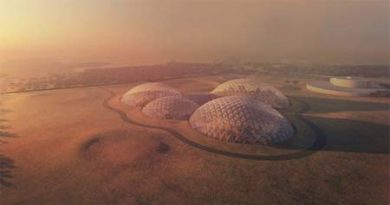Altering Alienscapes: the morality of terraforming (science video).
Picture this: humanity has finally reached the stars, possessing the technological wizardry to mould barren rocks floating in the abyss into lush, Earth-like havens. It’s the stuff of science fiction turned reality, a testament to human ingenuity and ambition. Yet, as we stand on the brink of such monumental power, a pressing question looms large: is it ethical to terraform planets?
At first glance, the idea seems a marvel, a solution to Earth’s burgeoning population and dwindling resources. Imagine vast, untouched worlds ripe for the sowing, ready to be transformed into new Edens. But scratch beneath the surface, and the ethical implications become as tangled as a thicket of alien flora.
Consider the notion of planetary stewardship. Just because we can claim these celestial bodies, does it mean we should? Terraforming is not a mere garden project; it’s an act of cosmic proportions, reshaping entire worlds to our will. In this grand endeavour, we must ask ourselves: are we caretakers or conquerors?
Then there’s the question of indigenous life. What if these seemingly barren planets host life forms, however primitive? Altering their environments could spell doom for these alien species, erasing untold branches of the tree of life. Do we have the right to play god, deciding which worlds thrive and which wither?
Moreover, think of the lessons from our own backyard. Earth’s environment is a delicate tapestry, woven from countless threads of flora and fauna. Our past actions show that even small disturbances can have cascading effects. With terraforming, we’re not just pulling a thread; we’re yanking on the entire weave. If we bungle Earth’s ecology, can we truly be trusted with others?
As always, SF books have shown us both sides of the coin. It’s evil when aliens try to do it to us. Let’s call them… invaders! Here are some notable works where this theme is central:
- The War of the Worlds by H.G. Wells: This classic novel, one of the earliest works to detail a conflict between mankind and an extraterrestrial race, hints at the Martians’ attempt to transform Earth’s environment to suit their needs, though their primary aim is conquest and colonization.
- Man of Steel (2013 film): While primarily a superhero movie, this iteration of the Superman story includes a plot where the Kryptonians attempt to terraform Earth to make it like their home planet, posing a direct threat to human survival.
- The Day the Earth Stood Still (2008 remake): In this film, the alien race aims to radically change Earth’s biosphere to save it from humans, essentially terraforming it for the preservation of other species and arguably for its own uses as well.
- Independence Day: Resurgence (2016 film): The sequel to the original Independence Day movie introduces the concept of the aliens using a massive structure to drill into the Earth’s core, which can be seen as an initial step in a broader terraforming process.
- The Three-Body Problem by Liu Cixin: While the main focus of this novel is not terraforming, the alien Trisolarans plan to invade Earth to escape their own unstable planet, and their need to adapt Earth for their habitation hints at underlying terraforming intentions.
And, of course, it’s always noble when we do it to other people’s planets. Here are some notable works that delve into the concept of humans terraforming other planets:
- Red Mars by Kim Stanley Robinson: This is perhaps one of the most definitive works on terraforming, the first in a trilogy that meticulously explores the scientific, social, and ethical aspects of terraforming Mars. The series follows a group of colonists as they transform the red planet into a habitable world, addressing both the technical challenges and the political ramifications.
- Dune by Frank Herbert: While the main focus of Dune is on politics, power, and ecology, terraforming plays a significant role, especially in the later books of the series. The transformation of the desert planet Arrakis into a more Earth-like world is a long-held dream of many characters, intertwined with the planet’s ecology and the production of the valuable spice melange.
- 2312 by Kim Stanley Robinson: Another work by Robinson, this novel explores a future where humanity has spread throughout the solar system, terraforming various celestial bodies. The story provides glimpses into the engineered environments on different planets and moons, showcasing the breadth of human ingenuity.
- The Martian Chronicles by Ray Bradbury: This classic collection of interrelated stories explores various aspects of Mars colonization, including terraforming. While not as technically detailed as some other works, it poignantly addresses the human and moral dimensions of altering another world.
- Terraforming Earth by Jack Williamson: This novel flips the typical terraforming narrative by focusing on a post-apocalyptic Earth. After a catastrophic event, a group of clones seeks to terraform the planet to make it habitable again, showcasing a different take on the theme.
- Blue Remembered Earth by Alastair Reynolds: Part of the Poseidon’s Children series, this novel delves into humanity’s future, where terraforming efforts extend to the outer solar system. The series examines not just the technological aspects of such endeavors but also their cultural and ethical implications.
But let’s not be all doom and gloom. Terraforming could be humanity’s magnum opus, a legacy of exploration and innovation. If done with care and respect, we might not just survive but flourish, spreading life’s tapestry across the cosmos.


